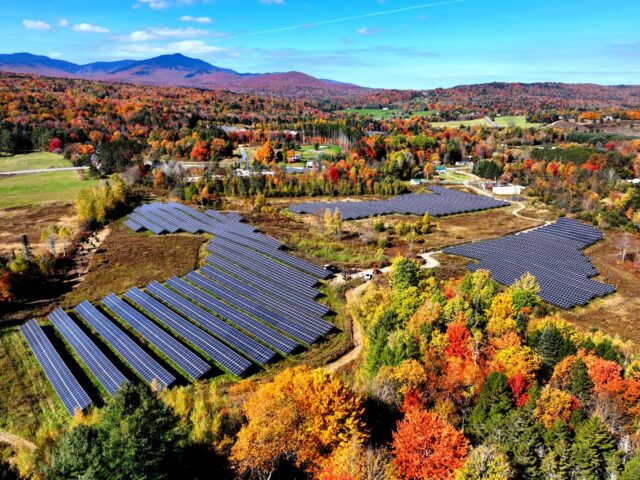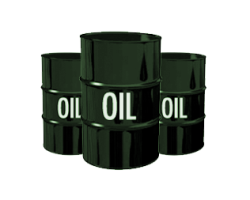Turning Brownfields to Brightfields
What is a Brownfield?
The Environmental Protection Agency (EPA) defines a brownfield site “as any land in the United States that is abandoned, idled or underused because redevelopment and/or expansion is complicated by environmental contamination that is either real or perceived.”
Brownfields are located in cities and towns in every state across the United States. They’re often the result of out-of-business or abandoned commercial enterprises like manufacturing facilities, dry-cleaning operations, or gas stations — places where chemicals were present in significant amounts over time that may have been spilled or released, resulting in impacts to soil and groundwater quality. Brownfields may be formerly bustling factories at the center of the town, an inactive rail yard now quietly surrounded by a chain-link fence, or large coal ash ponds in and around coal-fired power plants. Brownfield sites are common in the United States, and the EPA estimates that there are 450,000 brownfields in the US, covering 15 million acres.
Brownfields and renewable energy development
Solar energy grew by leaps and bounds in the 2010s. According to Wood Mackenzie, global annual solar installations grew more than sixfold this past decade, from 16 gigawatts in 2010 to 105 gigawatts in 2019.
The intersection of favorable economics and the demand for carbon-reducing solutions to address climate change means the U.S. solar industry will continue to grow. It is becoming increasingly difficult to find suitable sites for greenfield development that don’t involve environmental, aesthetic, or interconnection constraints. Solar development companies and investors are beginning to engage in solar farm construction on landfills, contaminated sites, and abandoned legacy industrial properties.
Since almost every city and town in the United States has brownfield sites, these represent an untapped opportunity for sustainable energy development on undervalued property near population centers. The EPA has already pre-screened 190,000 acres of brownfields for renewable energy development.
Encore: A brownfield redevelopment company
We have deep experience in the reuse of brownfields and landfills as host sites for community-scale solar arrays — still a relatively recent phenomenon.
We are your trusted partner through every phase of your brownfield or landfill clean energy project. We put our innovation, expertise, and integrity to work for you — from design and financing to permitting, construction, and asset management.
Addressing the challenges of brownfield redevelopment
Although brownfield redevelopment is still an underutilized segment of the market, we have deep expertise in identifying and mitigating the environmental liabilities and construction challenges inherent in brownfield redevelopment efforts.
Our work includes identifying and ameliorating environmental liabilities, designing projects to operate in conjunction with existing environmental remediation requirements, working with regulators, creating specialized construction procedures, and performing additional environmental remediation to address any potential soils that may need removal.
Advantages of developing solar on brownfields (Turning brownfields to brightfields)
Despite these challenges, it’s important to recognize that brownfield development also presents a unique opportunity for energy generation sites. Brownfield sites are usually located in close proximity to power lines and public roads, which can save the construction costs of building access roads, or costs associated with the construction of a long interconnect route. Redeveloping a brownfield or landfill with a community-scale solar project improves the local tax base, and can generate energy savings, create jobs, and turn blight into an economic opportunity.
Unique brownfield incentives and policies
Government officials are beginning to recognize the value of more solar built closer to areas with greater population density. Clear policies at the local, state and federal level can support the development of brownfields and ease project complications. Communities see opportunity in brownfield redevelopment as a means to improve their tax base, protect open space, and utilize previously-developed land for the community benefit.
Brownfield development can sometimes benefit from streamlined permitting and zoning. Some developers have seen permitting processes take only a few months, as compared with the industry average of 18 to 24 months for open space development. Typically, cities and counties encourage the redevelopment of potentially contaminated land with an understanding of the potential tax revenue generated through the reuse of an idle site. Communities support brownfield revitalization, especially when it protects open space.
Brownfield site development can benefit from improved project economics because of policies and incentives that reduce costs, but these beneficial policies are currently limited. The federal brownfield tax incentive allows clean-up costs to be fully deductible in the year they occurred, and several Northeast states also offer incentives.
Northeast States with Brownfield Incentives
Connecticut
Connecticut considers brownfields a preferred development side. State incentives include a brownfield development loan program, grants, liability relief, and siting guidance.
Maine
Maine enacted legislation that provides incentives for renewable energy projects built on preferred sites, and offers liability relief for brownfield redevelopment.
Massachusetts
Massachusetts offers subsidized environmental insurance, low-interest loans, tax incentives, and liability relief for brownfield redevelopment.
New Hampshire
New Hampshire offers loans and grants for brownfield development, as well as liability protection for those redeveloping brownfield properties.
New Jersey
New Jersey offers tax incentives, partial reimbursement of remediations costs, and grant and loan packages to help pay for assessment and cleanup.
New York
New York offers incentives such as liability relief and tax credits for brownfield redevelopment.
Pennsylvania
Pennsylvania prioritizes permits for brownfield redevelopment and offers grant and low-interest loan financing.
Rhode Island
Rhode Island created an inventory of every brownfield in the state and provides incentives for development, including funding assistance and grant opportunities, as well as cleanup loans.
Vermont
Vermont considers a brownfield among its “preferred sites”, which also include gravel pits, rooftops and parking lots, as practically the only sites in the state where developers can build large net metered solar farms. Vermont also offers liability protection for brownfield redevelopment.
Virginia
Virginia considers brownfield redevelopment a priority and offers a streamlined process for developers to address site contamination, as well as financial assistance in the form of grants or loans.
Current Encore brownfield solar projects:
Derry Landfill Solar
Encore will finance, design, construct, install, operate, and maintain a 2.2 MW ground mounted solar project, designated Derry Solar LLC, located on a closed and capped municipal solid waste landfill owned by the Town of Derry.
VPPSA Salvage Yard Solar
Encore developed a 3.3MW community solar array on an underutilized brownfield site in Morrisville, Vermont. The project is part of the partnership between Encore Renewable Energy and the Vermont Public Power Supply Authority (“VPPSA”), which was formed to pursue the development, financing and construction of approximately 10 MW of solar capacity on behalf of VPPSA’s…









 The team at Encore Renewable Energy® is proud to be certified as a B Corp, joining over 3,500 other businesses worldwide who also share a commitment to social and environmental performance, accountability and transparency.
The team at Encore Renewable Energy® is proud to be certified as a B Corp, joining over 3,500 other businesses worldwide who also share a commitment to social and environmental performance, accountability and transparency.